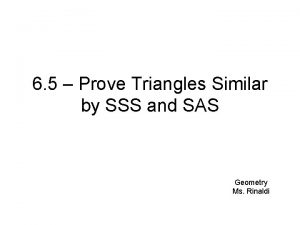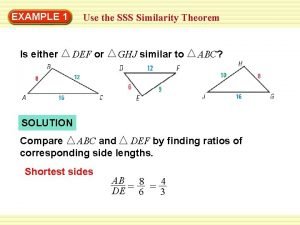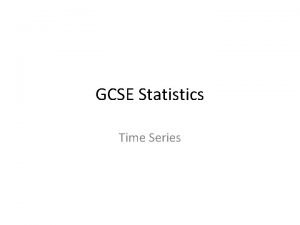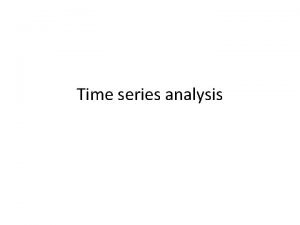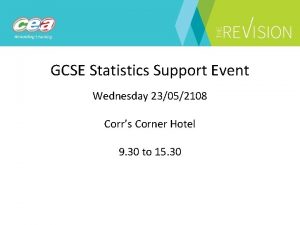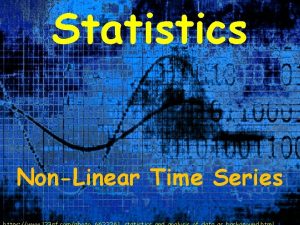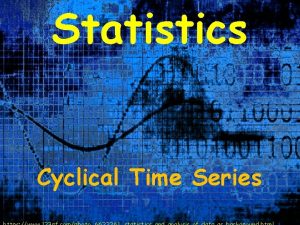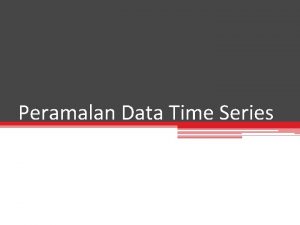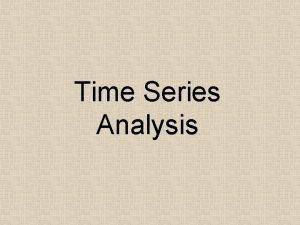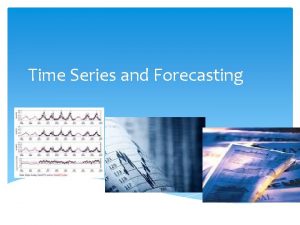GCSE Statistics Time Series The variations either side









- Slides: 9

GCSE Statistics Time Series

The variations either side of a trend line are called seasonal variations. The seasonal variation at a point = actual value at that point – value as shown by the trend line Seasonal variation for 1980 148 – 97 = 51 Seasonal variation for 1981 52 – 92 = -40

Mean seasonal variation A particular season’s variations differ from year to year. An estimate of a particular season’s seasonal variation is found by taking the mean value of all the seasonal variations for that season (which will make no sense at all to some of you) An example. . . The table shows the seasonal variations of the sales of ice creams

The table shows the seasonal variations of the sales of ice creams I got these by looking at the graph and seeing how far away from the trend line each of the values were plotted. Some values were above the trend line (+) , and some were below it (-). Year Quarter 1 2 2005 3 4 1. 2 - 1. 2 2006 - 0. 8 0. 5 1. 3 - 0. 9 2007 - 0. 7 . 6 1. 4 - 1. 0 2008 - 1. 0 0. 4 1. 2 - 0. 7 Totals - 2. 5 1. 5 5. 1 - 3. 8

Making Predictions A trend line and an estimated mean seasonal variation can be used to make predictions Predicted value = predicted trend line value + estimated mean seasonal variation for the season being estimated WOW The trend line often needs to be extended beyond the plotted value in order to make a prediction

To make predictions for 2006 and beyond we would have to extend the trend line


The accuracy of any prediction depends on two things: • How far into the future the prediction is made. The further into the future the prediction is made the less accurate it will be (extrapolation) • How good the estimates of the mean seasonal variation are at predicting future seasonal variations. Trends and variations can unexpectedly change. Show all working out – method marks are crucial Sometimes mean seasonal variation is called ‘average seasonal effect’

Your Turn exercise 6 F page 229 pgarnett@alsson. com for all your mathematical questions
